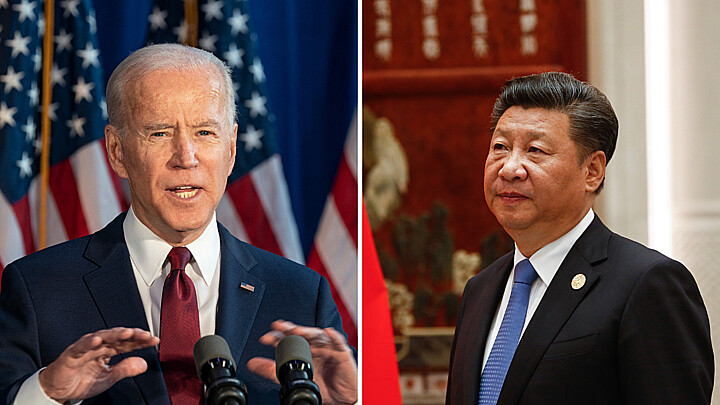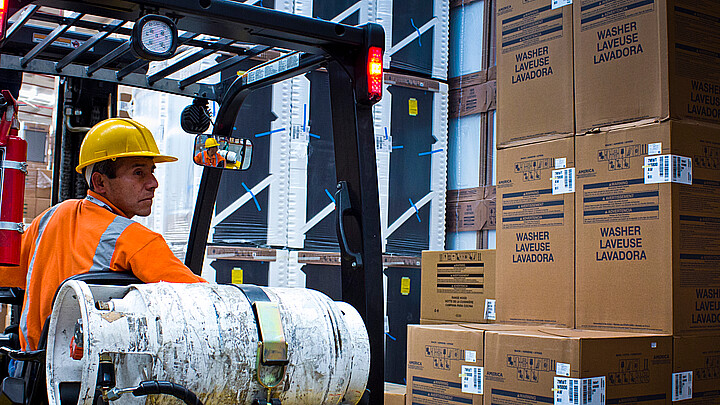Business
Some U.S. companies consider relocating operations from China to Mexico
As American companies look to move production away from China and Southeast Asia, Mexico has become an increasingly appealing option
February 18, 2022 3:09pm
Updated: February 19, 2022 8:58am
As American companies look to move production away from China and Southeast Asia, Mexico has become an appealing alternative option. After all, the U.S. southern neighbor has a strong manufacturing base and a growing talent pool of skilled tech workers.
Several businesses have been relocating to Mexico as part of a process known as “nearshoring,” a term that is picking up steam because it signifies a move to neighboring countries such as Mexico instead of managing trans-Pacific operations overseas in China.
Nearshoring is defined as “the transfer of business processes to companies in a nearby country, where both parties expect to benefit from or one more of the following dimensions of proximity: geographic, temporal (time zone), cultural, linguistic, economic, political, or historical linkages,” according to the online Dictionary of International Trade.
The online guide defines nearshoring as a “derivative of the business term of offshoring,” which is the opposite of outsourcing. Instead of finding third-party workers to help with in-house business operations—the company moves some or all of its activities to another country.
In a recent interview with Aljazeera, U.S. Business Association of E-Commerce (USBAEC) CEO Tayde Aburto said, “Some of our members have been successfully nearshoring to Mexico for several years. About five percent of our members had taken up nearshoring prior to the pandemic.”
Aburto’s organization has also taken advantage of relatively untapped Mexican work force, and USBAEC regularly hires tech professionals from the Mexican city of Morelia to support its operations, the Feb. 18 story reported.
The Mexican-American entrepreneur also stressed that in the hatchling stage of the recent post-COVID-19 phase, several U.S. businesses are nearshoring to Mexico to take advantage of the proximity to American markets and relatively inexpensive labor.
“When there is an opportunity, we connect companies with Mexican suppliers that we know have the quality and capacity to respond to the needs of American companies,” he told Aljazeera.
The possible shift of U.S. companies considering moving operations from China to Mexico could be mutually beneficial for both American business owners and Mexican workers and the country’s national economy, which suffered a downswing in foreign direct investment (FDI) the past couple of years.
Mexico’s Secretariat of Economy recently reported that the country received a total of $18.43 billion in foreign direct investment(FDI) inflows the first two quarters of 2021, but suffered a decline of 23.2% during the same period of 2020. Mexican FDI inflows totaled $29.1 billion in 2020 and $32.9 billion in 2019, marking a decline of 11.7%.
But some economic watchdog reports suggest that as the country edges closer to the end of the COVID-19 pandemic, the country is bouncing back.
Despite taking a significant hit from the COVID-19 pandemic, the International Monetary Fund (IMF) estimates that total Mexican GDP will amount to $1.37 trillion during 2022, a significant boost from even the pre-pandemic level of $1.26 trillion in 2019.
Conditions encouraging U.S. companies to nearshore to Mexico include pandemic-induced supply-chain disruptions, but also about potential negative consumer response to China’s human rights abuses, especially amidst the global diplomatic boycott launched by western countries against the 2022 Beijing Winter Olympics.
The Biden administration has slapped restrictions on several Chinese goods over concerns that they contribute to human rights abuses, which has amplified preexisting tensions between Beijing and Washington.
Apart from concerns about China, the United States-Mexico-Canada Agreement (USMCA), a free-trade pact that allows for duty-free trade and lower transaction costs throughout North America, has appeal for American businessowners.
“They have been sending their products from Korea to a port in Europe and then from Europe to South America and also the U.S.,” he said, noting that now “they are moving that distribution center from Europe to Mexico,” Aburto told Aljazeera.
“It is a country with plenty of resources that these companies are finally recognizing,” he added. “The [U.S.] federal government needs to be taking advantage of the opportunity to make Mexico’s strengths visible.”










